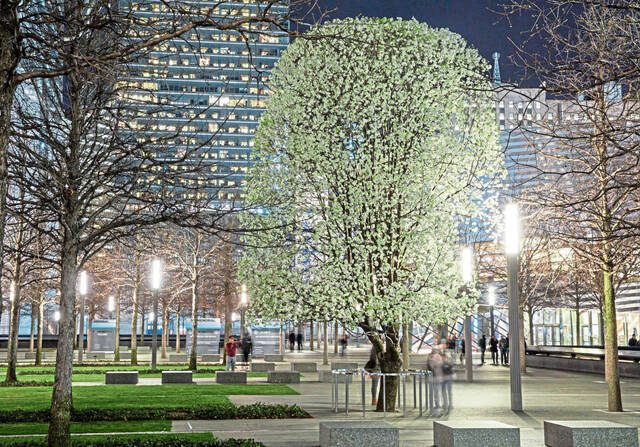Vomit-fumed 'Bradford' pear tree lands on Pa. noxious weeds list, with sales to be banned
As an urban landscaping option, a certain ornamental, flowering pear tree might be nice and compact — even with a bit of an odorous downside.
After some unfortunate cross-breeding between varieties, however, it now finds itself in the crosshairs of Pennsylvania horticulture officials.
Callery pear, scientifically known as Pyrus calleryana and casually as a “Bradford” pear, is a slim tree that produces clusters of small white flowers. It is native to China and Vietnam and was introduced to the U.S. in the early 1900s, according to Penn State Extension.
And while the agency characterizes the scent of those flowers as “strong and rancid” — and others have likened to vomit or worse — the tree generally was thought of as an unobtrusive way to bring a bit of nature to urban environments, becoming a popular landscaping feature in cities starting in the 1960s.
“Callery pear is another non-native plant that was brought to this country for its beauty and rapid growth, without regard for its long-term potential to harm our environment and food supply,” Agriculture Secretary Russell Redding said in announcing that the tree has been added to Pennsylvania’s list of noxious weeds.
Making that list means a ban on sale and cultivation, which takes effect Feb. 9 and will be phased in over the next two years.
“Banning the sale of an invasive plant is an important tool to stop its spread,” Redding said. “And (it’s) a step we take only after careful consideration of the damage it causes and its potential for continued harm to our ecosystem and economy.”
Cultivars of the species initially were bred to produce sterile fruit, according to extension officials, but cross-pollination between varieties has led to viable seeds. In an urban setting, that isn’t a big issue. But dispersal of the seeds through bird droppings has carried the Callery pear into the wild.
“The problem with those pear trees is if you get too many growing in one area,” said David Vargo, owner of Kiski Plaza Garden & Feed in Allegheny Township.
Another issue, even in urban settings, is the compact nature that made it so attractive as a city tree in the first place.
“It gets big. And then if you get a big thunderstorm in July or an early snowfall in October, they’ll break up and fall,” Vargo said.
Along with other landscapers and plant merchants, Vargo will have until early 2024 to phase out any cultivation or sale of Callery pear trees — of which there are several, including Chanticleer, the smaller Jack Frost and Cleveland Select.
Warning letters will go out starting in February 2023, providing the specific 2024 date when remaining inventory will be subject to a destruction order.
Another landscaping plant popular for being colorful and deer-resistant, the Japanese barberry, recently was added to the state’s noxious weeds list. Its sale will be phased out by early 2023.
For more on the Callery pear and how private property owners can keep an eye out for it, visit Agriculture.PA.gov.
Patrick Varine is a TribLive reporter covering Delmont, Export and Murrysville. He is a Western Pennsylvania native and joined the Trib in 2010 after working as a reporter and editor with the former Dover Post Co. in Delaware. He can be reached at pvarine@triblive.com.
Remove the ads from your TribLIVE reading experience but still support the journalists who create the content with TribLIVE Ad-Free.

